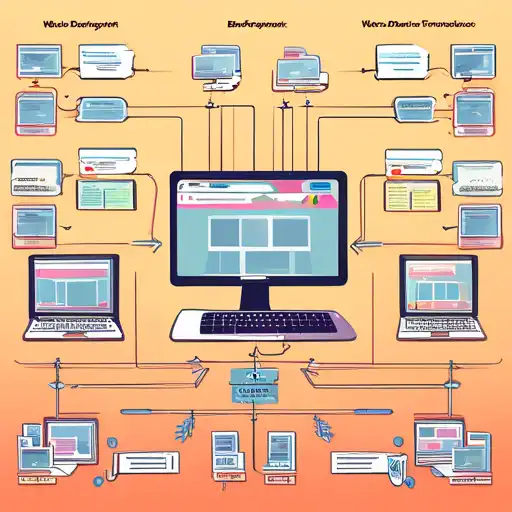Introduction to Web Development Frameworks
In the ever-evolving world of web development, choosing the right framework can be a daunting task. With a plethora of options available, each offering unique features and benefits, it's crucial to understand your project's needs before making a decision. This guide aims to simplify the process, helping you navigate through the maze of web development frameworks to find the perfect match for your project.
Understanding Web Development Frameworks
Web development frameworks are designed to support the development of web applications by providing a standard way to build and deploy them. They offer a foundation upon which developers can build, saving time and effort by eliminating the need to start from scratch. Frameworks can be broadly categorized into frontend and backend, each serving different purposes in the web development process.
Key Factors to Consider When Choosing a Framework
Selecting the right framework involves considering several factors, including:
- Project Requirements: The nature and requirements of your project play a crucial role in determining the most suitable framework.
- Learning Curve: Some frameworks are more beginner-friendly than others. Consider the skill level of your team.
- Community and Support: A strong community and good documentation can be invaluable resources.
- Performance: Evaluate the performance metrics of the framework to ensure it meets your project's needs.
Popular Web Development Frameworks in 2023
Here's a look at some of the most popular web development frameworks this year:
- React.js: A frontend library that's ideal for building user interfaces, especially single-page applications.
- Angular: A comprehensive frontend framework developed by Google, perfect for dynamic web apps.
- Vue.js: Known for its simplicity and flexibility, Vue.js is a great choice for both small and large-scale projects.
- Django: A high-level Python web framework that encourages rapid development and clean, pragmatic design.
- Ruby on Rails: A server-side web application framework written in Ruby, known for its ease of use and efficiency.
Making the Right Choice
Ultimately, the choice of a web development framework depends on your project's specific needs, your team's expertise, and the long-term maintenance considerations. It's advisable to prototype with a couple of frameworks before making a final decision. Remember, the best framework is the one that aligns with your project goals and team dynamics.
For more insights into web development, check out our latest trends in web development and how to choose the right programming language for your project.
Conclusion
Choosing the right web development framework is a critical decision that can significantly impact the success of your project. By carefully considering your options and evaluating them against your project's requirements, you can select a framework that not only meets your current needs but also supports future growth. Happy coding!
